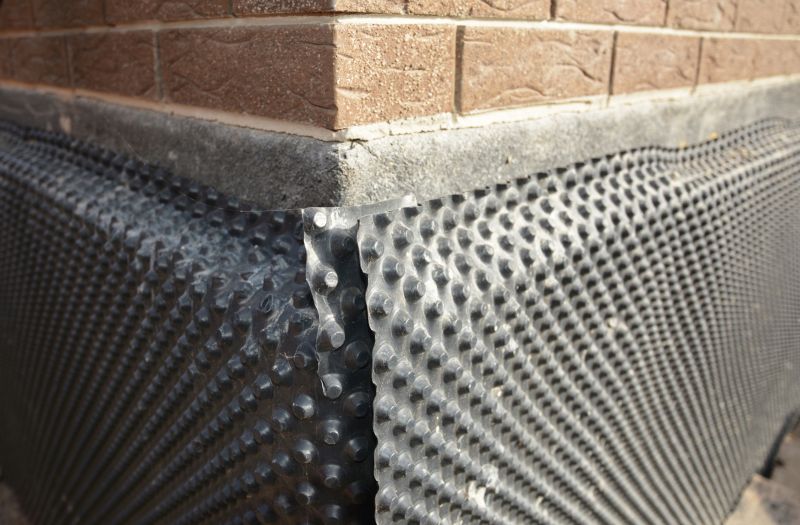Top Waterproofing Products for Effective Moisture Protection
Discover the leading waterproofing solutions designed to safeguard your property from water damage and ensure lasting durability.
 Waterproofing products are essential for protecting structures from moisture intrusion, which can cause damage over time. These products are used in various applications, including basements, roofs, foundations, and walls, to create a barrier against water ingress. Selecting the right waterproofing solution depends on factors such as the type of surface, exposure conditions, and the level of protection needed. Proper application and maintenance of these products can help extend the lifespan of a building and prevent costly repairs.
Waterproofing products are essential for protecting structures from moisture intrusion, which can cause damage over time. These products are used in various applications, including basements, roofs, foundations, and walls, to create a barrier against water ingress. Selecting the right waterproofing solution depends on factors such as the type of surface, exposure conditions, and the level of protection needed. Proper application and maintenance of these products can help extend the lifespan of a building and prevent costly repairs.
Top Overall Option
Liquid Waterproofing Membrane
A versatile liquid membrane provides a seamless, flexible barrier that can be applied to a variety of surfaces including roofs, basements, and foundations. Its ease of application and ability to conform to complex shapes make it a popular choice for many waterproofing projects.
Types of Products For Waterproofings
Liquid Rubber Coatings
Flexible coatings that form a seamless waterproof layer, suitable for roofs and decks.
Sheet Membranes
Pre-fabricated sheets used for foundation and roofing waterproofing, offering durability and ease of installation.
Bituminous Coatings
Asphalt-based coatings ideal for below-grade and foundation waterproofing applications.
Cementitious Coatings
Ready-mixed cement-based products that adhere well to concrete surfaces, often used in basements.
Elastomeric Coatings
Flexible coatings that accommodate movement and are suitable for roofs and walls.
Polyurethane Sealants
Sealants designed to fill cracks and joints, preventing water penetration.
Acrylic Coatings
Water-based coatings that provide a protective waterproof layer on various surfaces.
Bitumen Sheets
Self-adhesive or torch-applied sheets used in roofing and foundation waterproofing.
Liquid Flashing
Flexible liquid products used to seal around penetrations and joints.
Polymer Modified Bitumen
Enhanced bitumen with polymer additives for improved flexibility and durability.
Liquid Vinyl Coatings
Durable coatings providing waterproofing and UV protection for roofs and decks.
Crack Fillers
Specialized products to fill and seal cracks before applying waterproof coatings.
Waterproofing Paints
Paint-based products that add a waterproof layer to walls and ceilings.
Sealant Tapes
Adhesive tapes used for quick sealing of joints and minor cracks.
Spray-On Waterproofing
Spray-applied products for quick and uniform waterproof coating on large surfaces.
Popular Choices
Widely used for their flexibility and seamless application on roofs and decks.
Popular for foundation and basement waterproofing due to ease of installation.
Commonly chosen for below-grade waterproofing projects in foundations.
Favored for their ability to stretch and accommodate roof movements.
Popular for basement walls and concrete structures due to their adhesion and robustness.
Often used for sealing joints and cracks in various waterproofing applications.
Chosen for their ease of use and good adhesion on multiple surfaces.
Commonly selected for roofing and foundation waterproofing due to their durability.
Popular for large surface areas requiring quick and uniform application.
Frequently used to prepare surfaces before applying waterproof coatings.
Applied for minor waterproofing needs on walls and ceilings.
Convenient for quick sealing of joints and small cracks in waterproofing projects.
There are numerous types of waterproofing materials available, each suited for specific needs. Liquid membranes, for example, are versatile and easy to apply on different surfaces, forming a seamless barrier. Sheet membranes are prefabricated and often used in foundation walls and roofing systems for their durability and ease of installation. Sealants and coatings are also popular for sealing cracks and joints, preventing water seepage in areas prone to leaks.
In addition to traditional options, newer formulations include elastomeric coatings that provide flexibility and accommodate structural movements, and cementitious coatings that are often used in below-grade applications for their adhesion and robustness. When selecting waterproofing products, it is important to consider factors such as adhesion properties, weather resistance, ease of application, and compatibility with existing materials. Proper surface preparation and application techniques are critical to ensure optimal performance of these products.
Maintenance and inspection are also key components of an effective waterproofing strategy. Regularly checking for signs of damage or wear, especially after severe weather events, can help identify issues early. Using high-quality waterproofing products suited to the specific requirements of your project can help safeguard your property from water-related damage, preserving its integrity and value over time.
Key Buying Considerations
- Identify the specific area or surface that needs waterproofing to select the most suitable product type.
- Consider the exposure conditions, such as weather, UV rays, and water pressure, to choose a durable material.
- Evaluate the flexibility of the product, especially for surfaces prone to movement or expansion.
- Check compatibility with existing materials to ensure proper adhesion and performance.
- Assess ease of application, including whether the product requires specialized tools or techniques.
- Review the drying or curing time to plan application schedules accordingly.
- Look for products with proven adhesion properties on the intended surface type.
- Consider the longevity and maintenance requirements of the waterproofing solution.
- Ensure the product is suitable for the specific environment, such as below-grade or roof applications.
- Verify safety and handling instructions, especially for products with strong fumes or chemicals.
- Determine if the product is suitable for DIY installation or if professional application is recommended.
- Review warranty or guarantee options for added peace of mind.
- Consider the cost relative to the coverage area and expected lifespan.
- Check for any surface preparation requirements to maximize product effectiveness.
- Look for products with good reviews and proven performance records.
